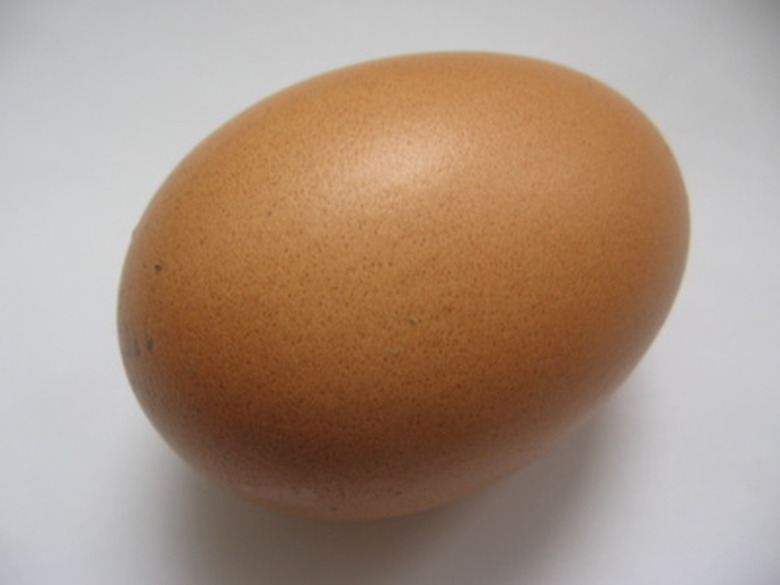Science Project Egg Experiments
Eggs make an easy and inexpensive supply for science projects for kids of all ages. Depending on the experiment, you can use fertilized eggs, unfertilized eggs, hard boiled eggs or uncooked eggs. Whether you teach a class on chemistry, physics or biology, you can use eggs in your science experiments.
Float or Sink Egg Experiment
Float or Sink Egg Experiment
Learn about density with the float or sink egg experiment. You'll need a large clear container, one uncooked egg, and salt. Fill your container with water. Place an egg in it and watch it sink because it has a greater density than the water. Remove the egg from the water. Stir salt into the water to give the it more density. Place the egg back in the water. If it doesn't float yet, continue to add salt to the water until the water has a greater density than the egg.
Egg Drop Experiment
Egg Drop Experiment
Perform the egg drop experiment in your physics class. Students — either as individuals or in groups –must design and produce a container that will hold an egg and prevent it from cracking when dropped from a predetermined height. Before beginning this experiment, discuss the factors and rules of the experiment, such as what materials can be used to make the container, the height the egg will be dropped from and what kind of surface will the egg container will fall on. Students will design and create the container using their knowledge of physics.
Egg in a Bottle
Egg in a Bottle
Teach students about air pressure by performing the egg in a bottle experiment. You'll need a shelled hard boiled egg, a glass bottle with an opening a little bit smaller than the egg, matches and a small piece of paper. Place a small piece of paper in the bottle, light a match and drop it into the bottle. Quickly set the egg on the top of the bottle. For the experiment to work, the opening must be completely closed off. Watch the egg get sucked into the bottle.
Naked Egg Experiment
Naked Egg Experiment
Do the naked egg experiment in chemistry class. You need an uncooked egg, clear jar and vinegar. Gently place the egg in the jar and cover it with vinegar. After a few minutes observe the bubbles forming on the egg. Set the jar in a refrigerator for 24 hours. Carefully pour out the old vinegar and replace it with fresh vinegar. Put it back in the refrigerator for an entire week. Pour out the vinegar and carefully rinse the egg with water. Notice that the egg has become translucent. The acetic acid in the vinegar has dissolved the shell, which is made of calcium carbonate, leaving only the membrane.
Cite This Article
MLA
Marquette, Kristen. "Science Project Egg Experiments" sciencing.com, https://www.sciencing.com/science-project-egg-experiments-7910182/. 22 November 2019.
APA
Marquette, Kristen. (2019, November 22). Science Project Egg Experiments. sciencing.com. Retrieved from https://www.sciencing.com/science-project-egg-experiments-7910182/
Chicago
Marquette, Kristen. Science Project Egg Experiments last modified August 30, 2022. https://www.sciencing.com/science-project-egg-experiments-7910182/
